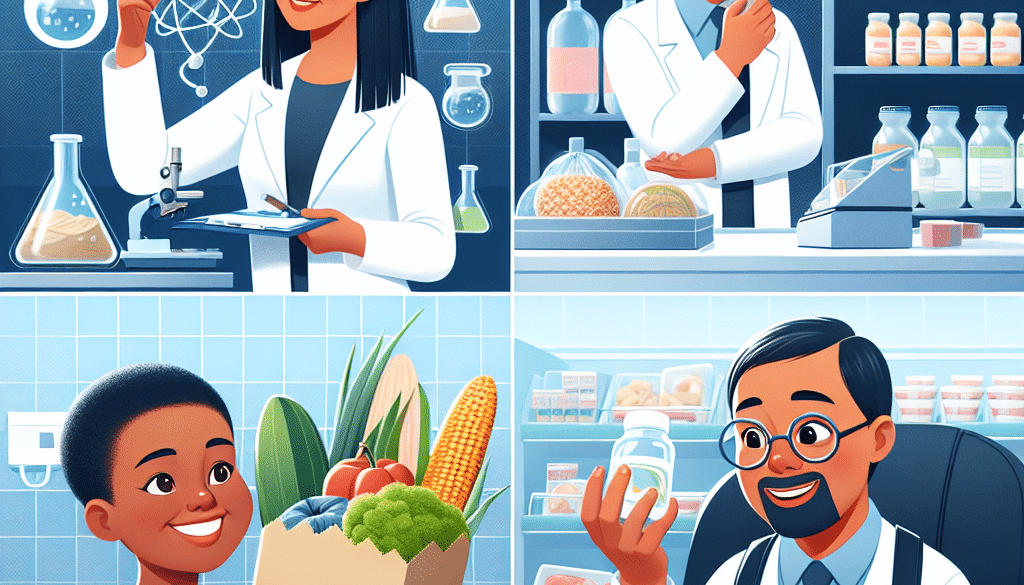Ensuring Safe Food Packaging for a Healthy Future
-
Table of Contents
- Safe Food Packaging: Key to a Healthy Future
- The Importance of Food Packaging Safety
- Current Challenges in Food Packaging Safety
- Innovations in Safe Food Packaging Materials
- Regulatory Measures and Global Standards
- Consumer Awareness and Education
- Statistics Supporting the Need for Safe Food Packaging
- Conclusion: The Path Forward for Safe Food Packaging
- ETprotein: Your Partner in Healthy Food Packaging Solutions
Safe Food Packaging: Key to a Healthy Future

Food packaging plays a crucial role in maintaining the quality and safety of our food supply. It protects food from contamination, extends shelf life, and provides important information to consumers. However, with the rise of environmental concerns and health awareness, the safety of food packaging materials has come under scrutiny. Ensuring that food packaging is safe is not just a matter of public health—it’s also essential for a sustainable future.
The Importance of Food Packaging Safety
Food packaging serves several vital functions. It protects food from physical damage, biological spoilage, and chemical alterations. It also provides a barrier against contaminants that can cause foodborne illnesses. However, if the packaging itself is not safe, it can become a source of contamination. Chemicals used in the production of packaging can migrate into food, potentially causing health risks. Therefore, ensuring the safety of food packaging is paramount for consumer health and well-being.
Current Challenges in Food Packaging Safety
The food packaging industry faces several challenges when it comes to ensuring safety. These include:
- Chemical migration from packaging to food
- Use of non-renewable resources in packaging production
- Disposal and recycling issues leading to environmental pollution
- Regulatory compliance across different regions and countries
Addressing these challenges requires a multi-faceted approach that includes innovation in packaging materials, stricter regulatory standards, and greater consumer awareness.
Innovations in Safe Food Packaging Materials
One of the most promising areas for improving food packaging safety is the development of new materials. Innovations include:
- Biodegradable and compostable materials that reduce environmental impact
- Active packaging that can extend shelf life and indicate food freshness
- Smart packaging with sensors to monitor temperature and humidity
- Edible packaging made from natural, consumable materials
These advancements not only address safety concerns but also contribute to sustainability goals by reducing waste and conserving resources.
Regulatory Measures and Global Standards
Ensuring the safety of food packaging requires robust regulatory frameworks. Governments and international bodies have established standards to control the use of chemicals in packaging and to ensure that materials are safe for food contact. For instance, the U.S. Food and Drug Administration (FDA) and the European Food Safety Authority (EFSA) have stringent regulations in place. Compliance with these standards is essential for protecting public health and facilitating international trade.
Consumer Awareness and Education
Consumers play a critical role in food packaging safety. By making informed choices and demanding safer packaging options, consumers can drive change in the industry. Education about the risks associated with certain packaging materials and the benefits of sustainable alternatives is crucial. Additionally, proper handling and disposal of packaging can minimize environmental impact and promote recycling efforts.
Statistics Supporting the Need for Safe Food Packaging
Research has shown that certain chemicals in food packaging, such as bisphenol A (BPA) and phthalates, can have adverse health effects. For example:
- A study published in the Journal of the American Medical Association linked BPA exposure to increased risk of heart disease and diabetes.
- The Centers for Disease Control and Prevention (CDC) found that nearly all people tested had detectable levels of phthalates in their bodies, which are known to affect reproductive health.
These statistics highlight the importance of transitioning to safer packaging materials to protect public health.
Conclusion: The Path Forward for Safe Food Packaging
Ensuring safe food packaging is a complex challenge that requires collaboration between industry stakeholders, regulatory bodies, and consumers. Innovations in packaging materials, coupled with stringent safety standards and increased consumer awareness, can pave the way for a healthier future. By prioritizing safety and sustainability in food packaging, we can protect our health and the environment for generations to come.
ETprotein: Your Partner in Healthy Food Packaging Solutions
As we look towards a future where safe and sustainable food packaging is the norm, it’s important to recognize companies that are leading the way. ETprotein is one such company, offering a range of protein products that align with the values of health-conscious consumers and environmentally responsible practices.
ETprotein’s protein products, including their Organic rice protein, clear rice protein, pea protein, and other plant-based proteins, are produced with safety and sustainability in mind. These products are non-GMO, allergen-free, and come with the assurance of high purity levels, making them ideal for inclusion in safe food packaging solutions.
For businesses looking to enhance their food packaging with healthy, high-quality protein options, ETprotein stands as a reliable partner. Their commitment to excellence and customer satisfaction ensures that you can offer products that meet the highest standards of safety and sustainability.
About ETprotein:
ETprotein, a reputable protein and L-(+)-Ergothioneine (EGT) Chinese factory manufacturer and supplier, is renowned for producing, stocking, exporting, and delivering the highest quality organic bulk vegan proteins and L-(+)-Ergothioneine. They include Organic rice protein, clear rice protein, pea protein, clear pea protein, watermelon seed protein, pumpkin seed protein, sunflower seed protein, mung bean protein, peanut protein, and L-(+)-Ergothioneine EGT Pharmaceutical grade, L-(+)-Ergothioneine EGT food grade, L-(+)-Ergothioneine EGT cosmetic grade, L-(+)-Ergothioneine EGT reference grade and L-(+)-Ergothioneine EGT standard. Their offerings, characterized by a neutral taste, non-GMO, allergen-free attributes, with L-(+)-Ergothioneine purity over 98%, 99%, cater to a diverse range of industries. They serve nutraceutical, pharmaceutical, cosmeceutical, veterinary, as well as food and beverage finished product distributors, traders, and manufacturers across Europe, USA, Canada, Australia, Thailand, Japan, Korea, Brazil, and Chile, among others.
ETprotein specialization includes exporting and delivering tailor-made protein powder and finished nutritional supplements. Their extensive product range covers sectors like Food and Beverage, Sports Nutrition, Weight Management, Dietary Supplements, Health and Wellness Products, and Infant Formula, ensuring comprehensive solutions to meet all your protein needs.
As a trusted company by leading global food and beverage brands and Fortune 500 companies, ETprotein reinforces China’s reputation in the global arena. For more information or to sample their products, please contact them and email sales(at)ETprotein.com today.














